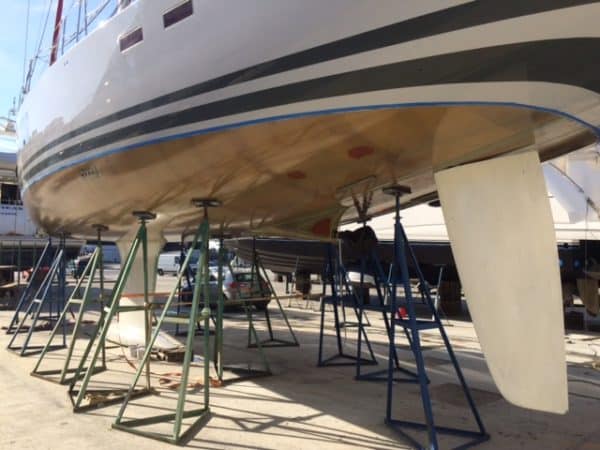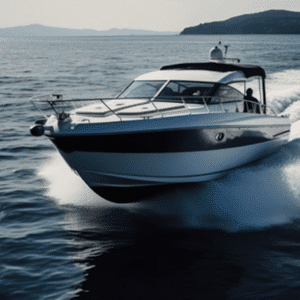While applying an epoxy primer is technically no more complicated than applying a single-component primer, it does require certain precautions to be taken, particularly in winter weather conditions.
The epoxies sold in the yachting industry have to be applied at average temperatures.
In winter, when applied at low temperatures, polymerisation between the resin and hardener slows considerably. Parasitic reactions can take over, such as the appearance of a greasy layer on the surface of the primer (known as a blush) and a film that is insufficiently cured. This phenomenon is all the more pronounced in wet conditions. In the longer term, there is a risk of bubbles or delamination between the layers as the water hydrolyses the weak bonds.
The best practices are therefore :
- Make sure that the surface to be painted and the paint are at the same temperature (beware of the inertia of the keel or epoxy pots).
- Work and apply paint indoors at constant temperatures above 10°C
- Make sure the temperature of the surface to be painted is above the dew point.
- Before application, mix the base and hardener and leave to stand for 20 to 30 minutes - closed pot - to allow the chemical reaction to begin: this is the induction principle.
And if blush has appeared, the only permanent solution is to mechanically remove the poorly hardened layer after cleaning the oily layer with warm soapy water.
 If you can’t comply with these constraints, it’s best to prepare the hull with PO primer, which is less sensitive to temperature variations and hardens in response to humidity.
If you can’t comply with these constraints, it’s best to prepare the hull with PO primer, which is less sensitive to temperature variations and hardens in response to humidity.






